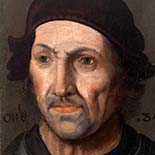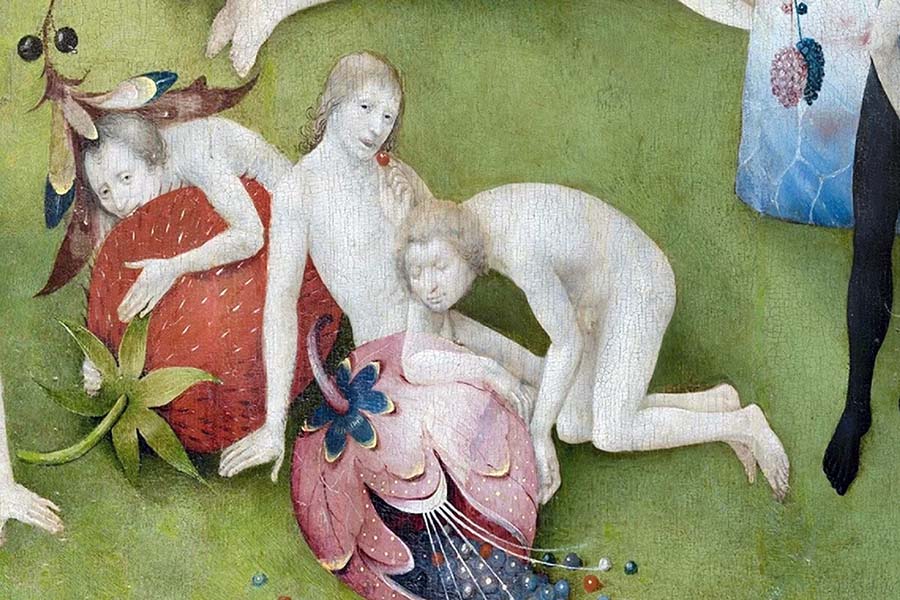 Hieronymus Bosch (c. 1450 – August 9, 1516) was a Dutch/Netherlandish painter. His work, generally oil on oak wood, mainly contains fantastic illustrations of religious concepts and narratives. Within his lifetime his work was collected in the Netherlands, Austria, and Spain, and widely copied, especially his macabre and nightmarish depictions of hell.
Hieronymus Bosch (c. 1450 – August 9, 1516) was a Dutch/Netherlandish painter. His work, generally oil on oak wood, mainly contains fantastic illustrations of religious concepts and narratives. Within his lifetime his work was collected in the Netherlands, Austria, and Spain, and widely copied, especially his macabre and nightmarish depictions of hell.
Little is known of Bosch’s life or training. He left behind no letters or diaries, Nothing is known of his personality or his thoughts on the meaning of his art.
Bosch’s most famous triptych is The Garden of Earthly Delights, (below), whose outer panels are intended to bracket the main central panel between the Garden of Eden depicted on the left panel and the Last Judgment depicted on the right panel. In the left hand panel God presents Eve to Adam; innovatively God is given a youthful appearance. The figures are set in a landscape populated by exotic animals and unusual semi-organic hut-shaped forms. The central panel is a broad panorama teeming with nude figures engaged in innocent, self-absorbed joy, as well as fantastical compound animals, oversized fruit, and hybrid stone formations.
The right panel presents a hellscape; a world in which humankind has succumbed to the temptations of evil and is reaping eternal damnation. Set at night, the panel features cold colors, tortured figures and frozen waterways. The nakedness of the human figures has lost any eroticism suggested in the central panel, as large explosions in the background throw light through the city gate and spill onto the water in the panel’s midground.
His depictions of sinful humanity and his conceptions of Heaven and Hell are now seen as consistent with those of late medieval didactic literature and sermons.

